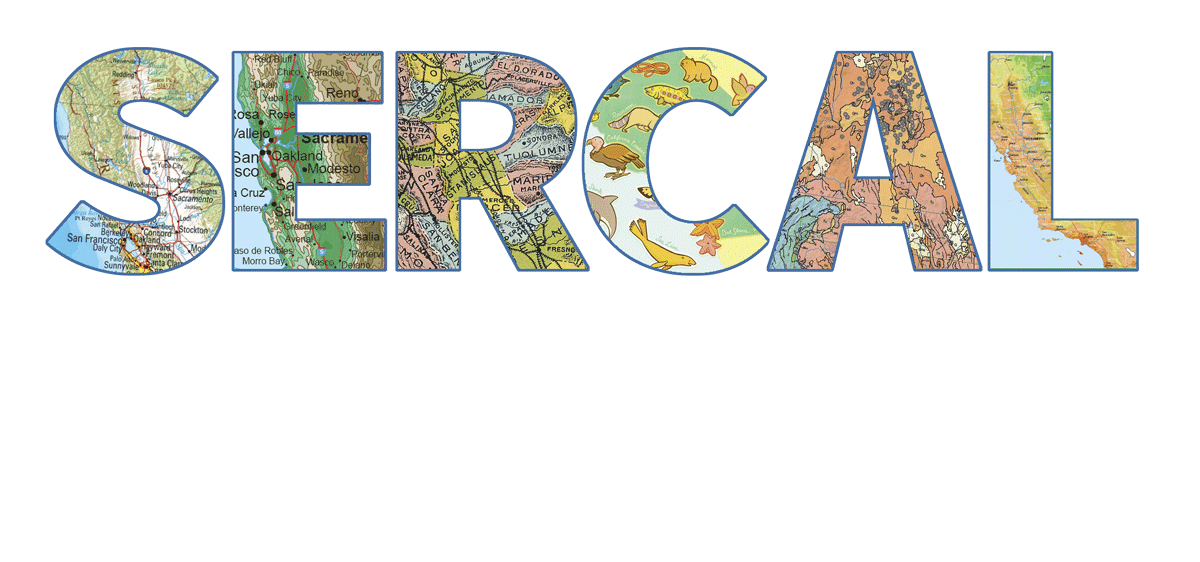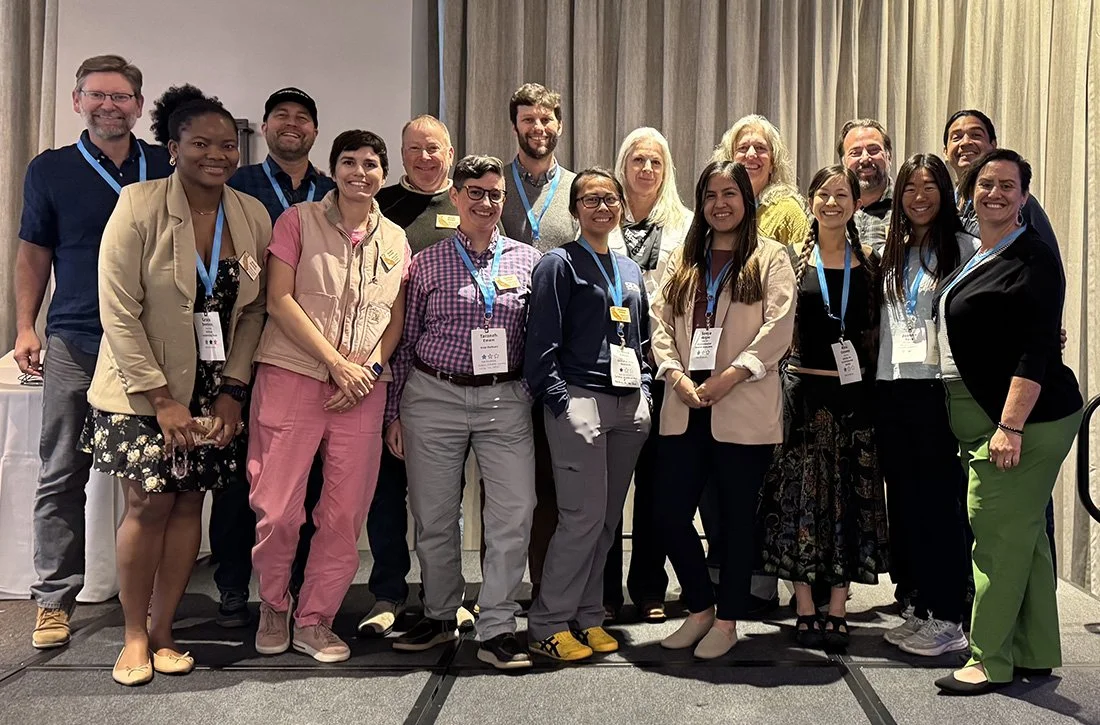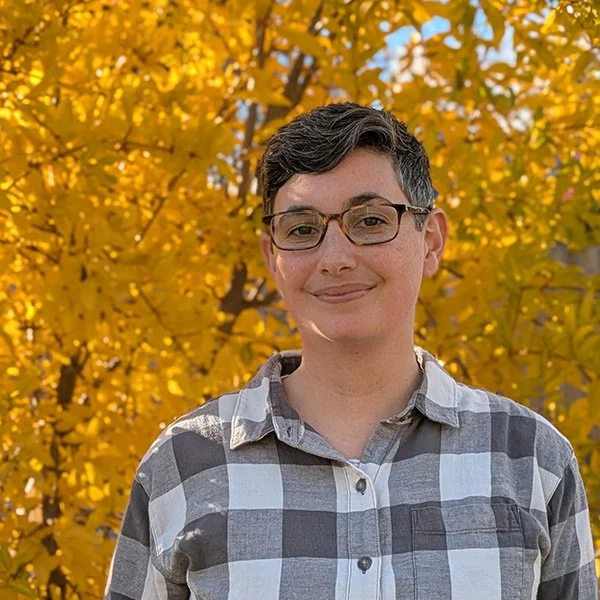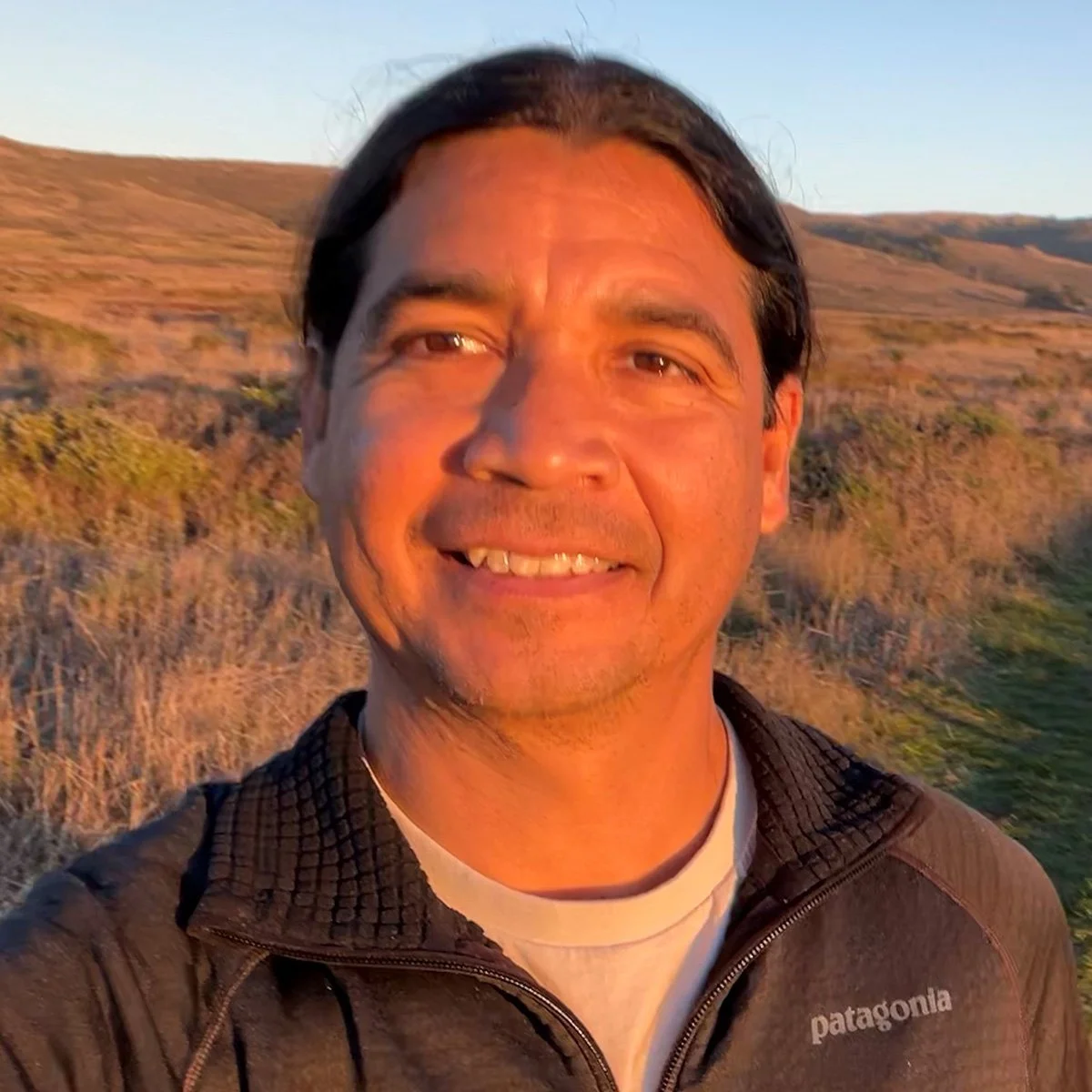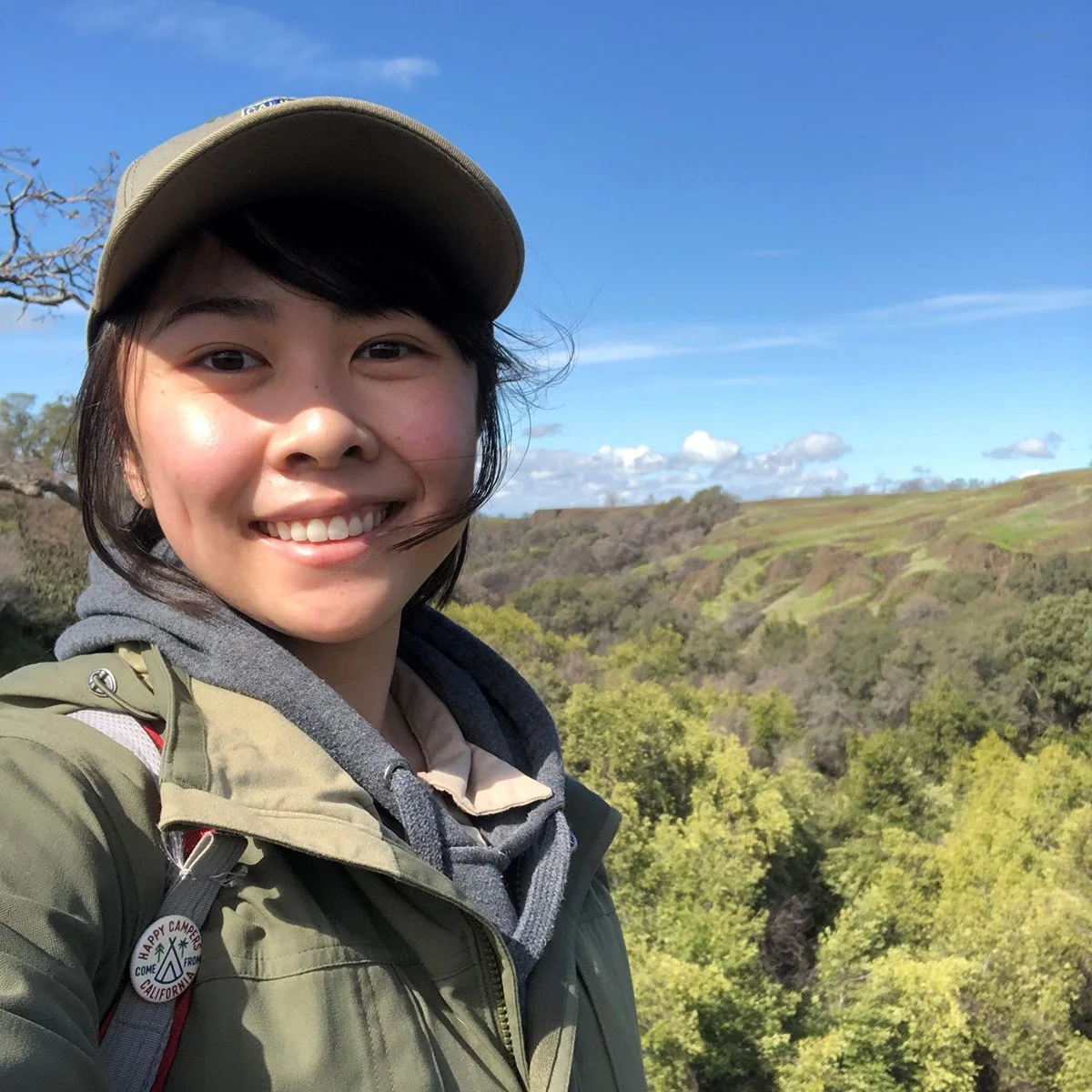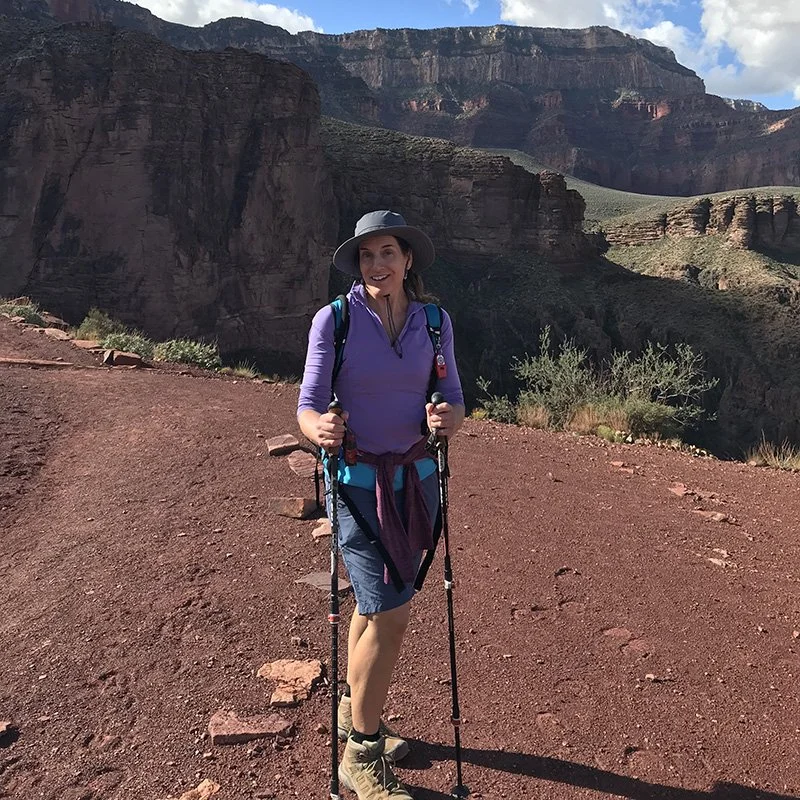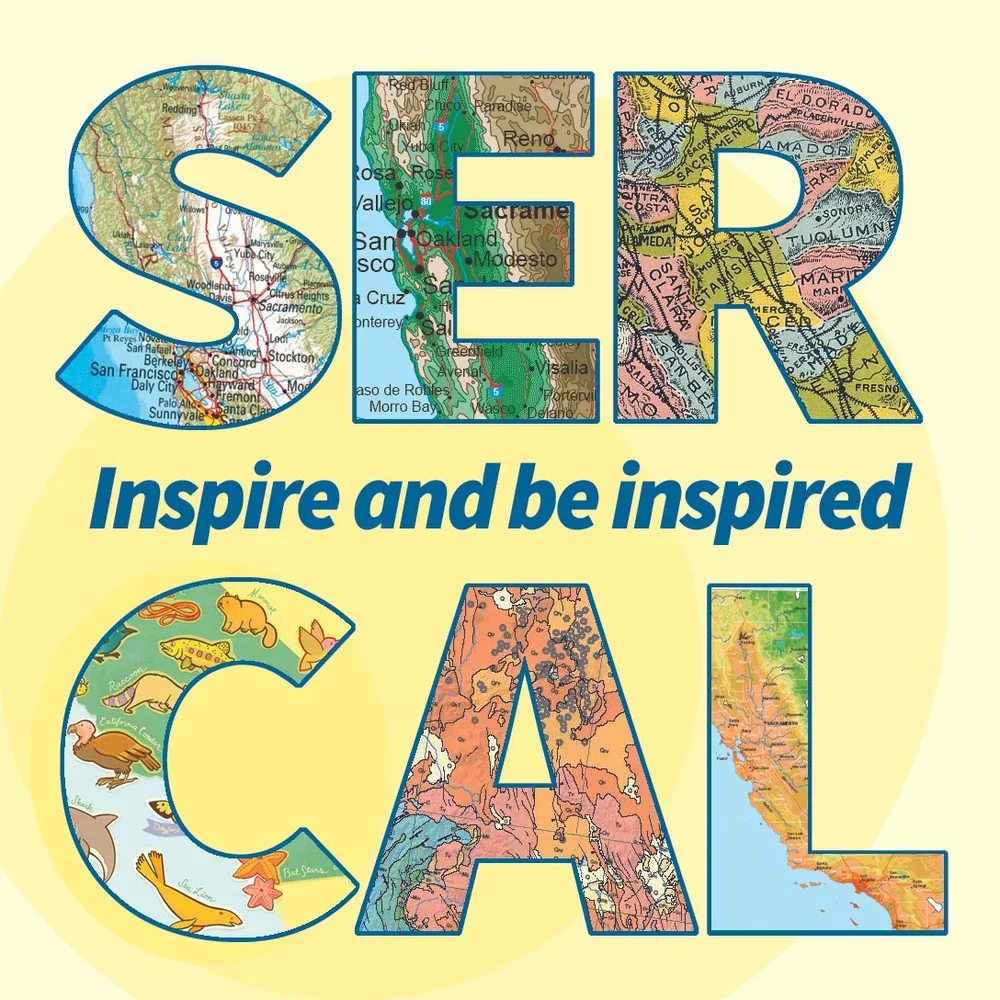SERCAL’s Leadership Team
The California Society for Ecological Restoration (SERCAL) is a membership organization, registered federally as a 501(c)3 nonprofit and in California as an educational organization. It was founded in 1990 by leaders in the then-young field of ecological restoration. SERCAL is governed by a Board of Directors and managed by a part-time Administrative Director and a new quarter-time Administrative Assistant. Learn more about the Leadership Team, their Roles and Responsibilities, and Team Members below.
Elections for open offices are held every year in December; please contact a Board member if you have questions about getting more involved! Fill out this form with your letter of interest and a resumé by the end of November if you are interested in being included in the next slate of Board candidates (renewable 3-year term). If you are interested in becoming an Affiliate (renewable 1-year term) OR if you’d like to volunteer, we will be happy to welcome you at any time… just use the same form to introduce yourself and your interests.
A membership meeting is held at the annual conference and all members are welcome to attend.
The Leadership Team was out in full force at SERCAL 2025 in Sacramento! Pictured in back row from left are Geoff Smick, Thor Anderson, Brian Bartell, Will Spangler, Allegra Bukojemsky, Julie St John, Rob Hobbs, and Moe Gomez; in front row from left are Grace Dominic, Yamina Pressler, Taraneh Emam, Chelsea Palisoc, Sonya Vargas, Nina Omomo, Joanna Tang, and Lindsay Teunis.
Board Officers
Lindsay Teunis | President | SWCA
Geoff Smick | Treasurer | WRA, Inc.
Will Spangler | Secretary | Gold Ridge Resource Conservation District
Directors
North Coast and High Desert
Brian Bartell | Prunuske Chatham, Inc., San Rafael | Conference, Raising the Barn
Geoff Smick | WRA, Inc., San Rafael | FiCom
Will Spangler | Gold Ridge RCD, Sebastopol | Conference
Isaiah Thalmayer | Point Blue, Petaluma | FiCom, Partnership Development, Raising the Barn
Central Coast and Valley
Chelsea Palisoc | California DWR, Sacramento | Conference
Joanna Tang | UC Santa Barbara | Mentoring, Partnership
South Coast and Eastern Desert
Rob Hobbs | RECON Environmental | FiCom
Sonya Vargas | ESA, Camarillo | Conference
At Large
Nina Omomo | Literacy for Environmental Justice, San Francisco | Conference, Partnership
Lindsay Teunis | SWCA, Boulder CO and San Diego | Conference, Raising the Barn, Partnership
Mando Valencia | UC Berkeley | ECO (Engagement, Communications & Outreach), Conference
Ashley Zavagno | WRA, Bend OR and Northern California | Conference Committee
Affiliates
Thor Anderson | Harris Environmental Group, Carmel Valley | Conference
Grace Dominic | SWCA
Taraneh Emam | River Partners | Conference, Partnership
Mauricio Gomez | South Coast Habitat Restoration, Carpinteria | Conference, Partnership
Katya Hernandez-Pol | US Forest Service
Etinosa Igunbor | Old Dominion University PhD Candidate
Sterling Meus | Marin Water | Ecesis
Trina Ming | Michael Baker International | Mentorship
Onolunose Oko-Ose | SERCAL, United Nations | ECO (Engagement, Communications & Outreach), Ecesis
Cassie Pinnell | Vollmar Natural Lands Consulting | 2026 Conference Chair, FiCom
Yamina Pressler | Cal Poly San Luis Obispo | Conference, Ecesis
Jeannine Ross | KMEA, San Diego | ECO (Engagement, Communications & Outreach), Conference
Administrative staff
Julie St. John Administrative Director | 520.791.9514 | julie (at) sercal.org
Onolunose Oko-Ose Communications & Programs Assistant | onolunose (at) sercal.org
Roles and responsibilities of the leadership team
SERCAL’s Bylaws stipulate 9–12 directors be on the board of directors. There shall be a minimum of 2 directors per region (ideally 3). Directors shall ideally live in the region they represent, or have a significant work/professional representation and knowledge in that region.
Board Directors are voting members with 3-year renewable terms. The directors vote on decisions related to budget, conference, and other business initiatives that need to be decided on. Voting occurs during the quarterly meetings. Therefore, Directors should plan to attend all quarterly meetings to ensure a voting quorum is present at the meeting for any items needing a vote. Directors are nominated by the Board through a vote, and then voted on by membership. Terms are based on the calendar year. The board may nominate and appoint a replacement director during the year to serve until the next election.
Board Affiliates are non-voting members, but critical for helping with ideas and execution of initiatives by the board. Affiliates serve a one-year renewable term and are non-voting members. Affiliates are expected to attend quarterly board meetings, but their attendance is not as critical being non-voting board members. Affiliates are nominated by the board, and can join at any time during the year, but term end/renewal is based on calendar year. Affiliates are not voted on by membership. Affiliates may be officers (secretary, treasurer, etc.).
Both Directors and Affiliates are expected to serve on at least one committee and be willing to dedicate at least one hour a month beyond board and committee meetings to work on initiatives to support their committee and the organization.
Committee Volunteers are persons interested in helping support a committee/initiative, but not interested in being on the board as an affiliate or board member (initially). They are expected to attend committee meetings and support committee research and initiatives. They do not attend board meetings or represent the Board. There are currently openings in the Conference, Diversity, Fundraising, and Mentoring Committees.
All Directors, Affiliates, and Volunteers shall be current members of SERCAL.
Meet the Leadership Team
We’ll be introducing past, present, and future leaders as we interview them! Why iI have enjoyed attending SERCAL conferences for the past 15 years and greatly appreciate how inspiring they are and the fantastic opportunity to meet restoration professionals from all over and hear about the work they are doing. I’m excited to be able to contribute behind the scenes and be a part of this incredible group of folks!s this important to share with you? Because we would love for you to participate more fully in the organization by getting some hands-on experience in leading an aspect of the conference, a fieldtrip or workshop, or an issue of Ecesis — whatever feels right for you. Think about it!
An interview with Etinosa, new affiliate member of SERCAL's Leadership Team
Etinosa was one of our first Torchbearer recipients at our 2024 conference at Redlands. We are glad to welcome him to the Leadership Team!
What is your occupation and who do you work for? I am currently a Graduate Research Assistant at Old Dominion University, where I contribute to ecological research projects, focusing on fieldwork, data analysis, and innovative methodologies to support environmental conservation. Prior to this, I worked as a Forest Conservation Officer with the Ministry of Environment and Sustainability in Edo State, Nigeria. In this role, I played a key part in mitigating forest ecosystem degradation, advocating for sustainable land management practices, and supporting the development of strategic forest management plans. My combined experience in academic research and practical forestry management has strengthened my expertise in ecological restoration and conservation.
What do you think will be the biggest benefit of being a part of the SERCAL’s Leadership Team? Being part of the SERCAL Leadership Team offers an exciting opportunity to collaborate with like-minded professionals dedicated to advancing ecological restoration. I believe my experience in research, fieldwork, and community outreach will allow me to contribute meaningfully to shaping effective strategies, promoting sustainability efforts, and strengthening partnerships to achieve impactful restoration outcomes.
What are you most proud of learning in your work or studies? I am most proud of learning the power of interdisciplinary collaboration in driving ecological solutions. By combining ecological science with remote sensing, GIS mapping, and community engagement, I have seen firsthand how diverse approaches can produce innovative and effective conservation strategies.
Which (endangered) native species do you most hope to see thrive in the coming years? I deeply hope to see the Greater Sage-Grouse thrive. As a species that heavily depends on sagebrush ecosystems, its decline reflects broader environmental challenges such as habitat fragmentation and climate change. Restoring these vital landscapes through improved land management practices and community-driven conservation efforts can help ensure the recovery of this iconic species, benefiting entire ecosystems that rely on healthy sagebrush habitats.
What do you hope to see in terms of ecological restoration in the next year or so? In the coming year, I hope to see a stronger integration of community-led restoration projects with scientific research. Empowering local communities with the tools and knowledge to manage their landscapes sustainably can accelerate restoration efforts and build long-term environmental resilience.
An interview with Taraneh, new affiliate member of SERCAL's Leadership Team
Taraneh was one of the first volunteers to join our Diversity Taskforce in 2021. Since then, she has been volunteering time and ideas for the conference and co-hosted the virtual Career Panel in 2025 with Greg Andrew. She is a great addition to the Leadership Team!
What is your occupation and who do you work for? I recently joined River Partners as a Restoration Planning Coordinator, working on the early stages of planning out riparian/floodplain restoration projects in the Central Valley and doing outreach to find landowners and organizations interested in partnering on these projects.
What do you think will be the biggest benefit of being a part of the SERCAL’s Leadership Team? I have enjoyed attending SERCAL conferences for the past 15 years and greatly appreciate how inspiring they are and the fantastic opportunity to meet restoration professionals from all over and hear about the work they are doing. I’m excited to be able to contribute behind-the-scenes and be a part of this incredible group of folks!
What are you most proud of learning in your work or studies? My research background is in grassland restoration, but during my 9 years as a consultant I moved into riparian and vernal pool restoration. Work in consulting also turned me into a regulatory nerd — I never thought I would find myself reading the federal register for pleasure! Now with River Partners, I am excited to be getting more in-depth with riverine and riparian restoration.
Which (endangered) native species do you most hope to see thrive in the coming years? There is such exciting progress towards assisting recovery of salmon populations throughout the state and this is such an important species ecologically, culturally, and commercially — it is wonderful to see these huge, historic efforts such as in the Klamath region. I also hope that the recent Candidacy decision for burrowing owl under CESA will help slow the decline of burrowing owl populations.
What do you hope to see in terms of ecological restoration in the next year or so? I am excited about the efforts being made on multiple fronts to support restoration and conservation (e.g. Cutting the Green Tape, Prop 4, 30x30), as well as the increasing acknowledgement of the critical role of California’s Indigenous peoples in stewarding the land and expanded funding for land-back opportunities and Traditional Ecological Knowledge practices. With the dire federal climate, I am hoping that California can continue to step up as an example of what is possible.
An interview with Yamina Pressler, new affiliate member of SERCAL's Leadership Team
We met Yamina at our 2023 conference in Davis and by 2024, she brought almost an entire class to participate at the conference in Redlands. She’s a superstar and we consider ourselves fortunate to welcome her to our crew.
What is your occupation and who do you work for? I am a soil scientist, educator, and Assistant Professor of Soil Science and Restoration Ecology at Cal Poly, San Luis Obispo.
What do you think will be the biggest benefit of being a part of the SERCAL’s Leadership Team? I am excited to learn more about how others are approaching ecological restoration challenges in the state, and bring those lessons back to my courses.
What are you most of learning in your work or studies? Soils have many lessons to share if we take the time to get to know them. I am constantly finding new lessons about living a resilient life by studying soils and their inhabitants.
Which (endangered) native species do you most hope to see thrive in the coming years? In the last several years, I have fallen in love with birding along the Pacific coast. I am sending good vibes to all the Western Snowy Plovers (Charadrius nivosus nivosus) out there!
What do you hope to see in terms of ecological restoration in the next year or so? I hope to see continued investment in both conservation and restoration around the state that intentionally considers all aspects of the environment including plants, water, wildlife, soils, and people!
An interview with Mauricio Gomez, member of SERCAL's Conference Committee
Mauricio “Moe” Gomez co-chaired SERCAL 2019 with Will Spangler in Santa Barbara. His teamwork and his perspective are both integral to the functioning of his local community and to SERCAL.
What is your occupation and who do you work for? I am the Director of South Coast Habitat Restoration. SCHR is a small non-profit organization based in Santa Barbara County that works to restore habitat in the SB and Ventura region. We primarily work on creek restoration projects working with a various landowners including private, State (State Parks, County of SB) and Federal (Forest Service).
What is the biggest benefit of being a part of the SERCAL’s Conference Committee? Being a part of the SERCAL Conference Committee allows me the opportunity to share my ideas and provide input so that SERCAL can organize a conference which provides the greatest benefit to all who attend. I enjoy helping with tours as this provides an opportunity to see projects and learn from colleagues that are doing work.
What are you most proud of in your restoration work? Working to restore habitat for endangered species and sharing our work with landowners so they support our work and allow us to work on voluntary projects on their property.
Which (endangered) native species do you most hope to see thrive in the coming years? Steelhead trout and California red-legged frogs. These are two incredible species that I’ve had the opportunity to see in our region. Steelhead are rarely seen and most of our work focuses on restoring access to habitat that has been blocked for decades. I hope that our will allow for future generations to see them regularly.
What do you hope to see in terms of ecological restoration in the next year or so? I hope to see two things: 1) Continued support from government funding to continue to support ecological restoration, and 2) More diversity in the ecological restoration community.
An interview with Chelsea Palisoc, member of SERCAL's Diversity Committee & Leadership Team
We love that Chelsea brings so much insight and creativity to the team! She has been an active participant in the Diversity Committee since its founding, and we are so lucky to work with her.
What is your occupation and who do you work for? I'm an environmental scientist for the Department of Water Resources. I work on urban stream restoration grants and fish passage projects.
What is the biggest benefit of working on the SERCAL Diversity Committee? I love working with people across the state that share my passion for both restoration and social justice because it's empowering to see collective action. SERCAL's Diversity Committee is committed to making sure all are welcome not only in our industry, but in how our restoration projects will impact and improve our communities, and I think that is incredibly powerful.
What are you most proud of in your restoration work? Returning endangered winter-run Chinook to the McCloud River above Shasta Dam and working on feasibility projects to return salmon to previously inaccessible habitat are very proud moments for me. Working with the local Tribes of my project locations have made all the difference in getting these projects off the ground, and it is amazing to work with the original stewards of the land. Teaching kids about restoration and the salmon life cycle is also high up there.
Which (endangered) native species do you most hope to see thrive in the coming years? All of them, but especially our anadromous salmonids- Chinook, Coho and Steelhead!
What do you hope to see in terms of ecological restoration in the next year or so? I want to see more dams come down and more fish passage projects on our creeks and rivers!
An interview with Jeannine Ross, member of SERCAL's Leadership Team
We can always count on Jeannine to take an active role in committees (Diversity currently), lead a Session, or roll up her sleeves to help with fundraising or volunteering at the conference. Thank you, Jeannine!
What is your occupation and who do you work for? I am a Senior Restoration Ecologist/Project Manager at KMEA in San Diego, CA.
What is the biggest benefit of working on the SERCAL diversity committee/leadership team? The biggest benefit of working on the SERCAL diversity committee/leadership team is getting to spend time coordinating activities with colleagues on the team for whom I have deep respect and admiration. I enjoy working with these awesome folks towards the common goal of increasing diversity in our SERCAL membership. In particular, I think that creating activities and events geared towards young students of all backgrounds and interacting with these students at conferences have been the most satisfying parts of the work on SERCAL diversity committee. The earlier in a young person’s career that we can interest them in ecological restoration, make them feel welcomed by SERCAL, help them to see themselves finding joy in the work that we do, the more likely that they will go on to find volunteer and employment opportunities in our field. I think that this work is the truly the path to strengthening and expanding the breadth and experience of the field of ecological restoration and improving environmental justice: restoration for all!
What are you most proud of in your restoration work? I am most proud of the diversity and unique nature of the native California habitats in which I have had an opportunity to work over the last 18 years. I enjoy looking at a map and seeing all the places where I have been able to complete a successful restoration project and, in some cases, knowing the ins and outs of a remote location that few people have been able to visit. I think that my pride in my work is tied to gratitude for my privilege in having a career that has given me so many experiences to be in wonderful places with unique or rare vegetation. While native vegetation brings me great joy because it is glorious and magical, working in the field of restoration ecology also makes me feel a connection to Native Americans and their respect for and understanding of the natural world.
Which (endangered) native species do you most hope to see thrive in the coming years? Like many ecologists, I have a handful of rare native plants that I hold close to my heart. However, I don’t feel that it is possible to hope to see a rare or endangered species thrive without preserving the unique set of interactions between a particular species and the other species and environmental factors in its habitat such as pollinators, common native shrubs, soils, topography, slope aspect, temperature, etc. that are a part of that rare species’ habitat. Some habitats that I would love to see thrive in the coming years include oak woodlands which have suffered due to the Goldspotted Oak Borer and southern willow scrub which has suffered due to the invasive Shot Hole Borer. I’m also very fond of coastal dunes, coastal wetlands, vernal pools, and maritime chaparral.
What do you hope to see in terms of ecological restoration in the next year or so? I think that climate change and sea level rise have become and will continue to be the biggest future ecological restoration challenges, making coastal resiliency planning a priority. I think that the most vulnerable habitats that need immediate protection are coastal wetlands, islands, and seashores. I hope to see humans who live along vulnerable shorelines move inland to allow the natural processes of erosion and beach formation to occur. I hope to see climate change solutions that respect, rather than defy or “correct,” ecological processes. I would love to see artificial turf fall from favor as it is heating up the planet and has poor natural filtration as compared to natural stone, gravel, decomposed granite, or live grass turf. I hope to see restoration ecologists continue to embrace the practices of Native American ancestors such as the use of controlled burning to prevent massive fires. I love that SERCAL is forging relationships with local tribes so that partnerships between ecologists and local indigenous persons will continue to strengthen and ecological insight will be mutually shared.
An interview with Thor Anderson, member of SERCAL's Leadership Team
Thor was chair of SERCAL 2020, our in-person-turned-virtual conference, and came back in 2022 to chair our first in-person post-you-know-what, in Carmel Valley. Thank you, Thor! You are a rock star!
What is your occupation and who do you work for? Senior Ecologist and Project Manager for Harris Environmental Group, Inc.
What is the biggest benefit of working on the SERCAL conference committee/leadership team? Inspiration, networking, learning, sharing, and building community.
What are you most proud of in your restoration work? I am most proud of my restoration work at the former Fort Ord, where I have been able to help restore native oak woodlands, grasslands, vernal pools, and the rare maritime chaparral habitats for the last 25 years. I became involved in habitat restoration at the former Fort Ord when I volunteered on projects as a CSU Monterey Bay college student in the late 1990s. That volunteer work grew into an internship, which eventually evolved into a professional position with the Watershed Institute of CSUMB, where I continued to contribute to former Fort Ord restoration projects through the years. Then, in 2011, as a consultant, I had the opportunity to lead the restoration of 62 acres of maritime chaparral habitat at the former Fort Ord for the Army. My restoration work at form Fort Ord continues today as I monitor these restoration sites to ensure their success. I take great pride in this work because I've witnessed the success of the restoration over time, and I plan to continue my efforts at the former Fort Ord for many years to come.
Which (endangered) native species do you most hope to see thrive in the coming years? I would like to see the federally endangered Smith’s blue butterfly (Euphilotes enoptes smithi) thrive, which can be achieved through the acquisition and restoration of critical habitat for the species in the upcoming years.
What do you hope to see in terms of ecological restoration in the next year or so?
I am excited to witness the outcomes of California's '30x30' goal, which aims to conserve 30% of its land and coastal waters by 2030. This initiative presents a fantastic opportunity to protect, restore, and expand access to natural lands, contributing to the building of resilience against climate change. I believe '30x30' is a significant opportunity to advance ecological restoration throughout California.
An interview with Brian Bartell, member of SERCAL’s Leadership Team
Brian was just elected as a Representative to the North Coast and High Desert! He has been so helpful in our Mentorship and Conference work and we are excited he is making this next step. Thank you Brian!
What is your occupation and who do you work for? I am a landscape architect specializing in wetland, floodplain and river restoration with a focus on salmonids in Northern California, working for Prunuske Chatham, Inc., (PCI).
What is the biggest benefit of working on the SERCAL conference committee/leadership team? Restoring lost habitat is my passion, and being on the SERCAL board allows me to share that passion and encourage others to thrive in the field of ecological restoration.
What are you most proud of in your restoration work? That question is hard to answer. I have a few large-scale and impactful projects that I am very proud of, but I think what I am most proud of is being involved in the evolution of the restoration field over the past 25 years. My personal journey has taken me from the early days on the east coast completing simple creek channel and wetland projects to my work in California designing and building complex habitat restoration projects including vernal pool complexes, dam removals and floodplain/side channels for salmonids. And the field itself has also evolved so much over the past few decades. The science is catching up and the benefits of our restoration efforts have increased exponentially.
Which (endangered) native species do you most hope to see thrive in the coming years? Steelhead, coho, and chinook salmon.
What do you hope to see in terms of ecological restoration in the next year or so? The largest need I see in advancing restoration in California is to get all of the regulatory agencies on board with streamlining the permitting of restoration projects. The California Department of Fish and Wildlife has spearheaded the Cutting the Green Tape effort, which has helped tremendously. But some of the other agencies continue to treat restoration work in the same manner as development projects, which results in unnecessary expense and significant time expenditures.
An interview with Joanna Tang, member of SERCAL’s Leadership Team
Joanna has been an affiliate on the Board for about two years and we are so lucky to have her energy and enthusiasm! These days she is guiding the Mentorship Program — improving and fine-tuning — and she’s also chaired sessions at the last two conference.
What is your occupation and who do you work for? I’m a PhD Candidate at UC Santa Barbara studying restoration ecology.
What is the biggest benefit of being a SERCAL affiliate? Getting a behind-the-scenes look at the amazing work SERCAL does. It’s really interesting to see how a non-profit operates and how each individual contributes to make things happen, and I find it really empowering and inspiring.
What are you most proud of in your restoration work? I am most proud of just having my hands on the land, transforming a landscape into a beautiful native community. I also love being able to do restoration work with local community members and students to empower them to steward their land. I loved working at Grassroots Ecology, bringing local school groups out for native planting days in local open spaces.
Who or what has inspired you to work in restoration? My parents inspired me to be curious about the world around me, and I grew up in the Bay Area where I could play and learn outside. Experiencing the benefits and beauty of nature inspires me to take care of it — it's a reciprocal relationship.
What do you hope to see in terms of ecological restoration in the next year or so? I hope to see more local stewardship initiatives oriented toward building resilient communities. Indigenous-led stewardship work can revive stronger relationships between people and nature and spearhead restoration work that build resilient communities of plants and people.
An interview with Mando Valencia, newest member of SERCAL’s Conference Committee
We’ll let Mando introduce himself, but we just want to say that we’re excited that he stepped up to become and affiliate after his first SERCAL conference. We know he’ll bring a lot of great ideas to SERCAL 2024!
What is your occupation and who do you work for? Currently, I am an undergraduate student at California State University, East Bay majoring in Environmental Studies. I am also a docent at Jepson Prarie Nature Preserve where I assist in guided tours over the Spring and am blessed with the opportunity to share my favorite ecosystem. Im mostly interested in how human development in practice and thought impacts ecological systems and narratives over time, and what mitigations can be implemented to restore environmental understanding in modern cultures. Currently, I work for WRA as a Project Biologist doing biological monitoring for restoration sites. It's a really interesting way to see how collaborative these efforts can be and what opportunities we have within our communities to promote this type of pre-infrastructure.
What is the biggest benefit of your SERCAL membership? I’m working on a lot of really cool projects and the idea of ecological restoration is the full-circle application of scientific research, social studies, and sustainable policies. Working with SERCAL gives me the opportunity to see other projects in action and the strategies developed to see them to completion.
What is your favorite California native species? It's hard to determine my favorite native species. Over time, I have learned to grow fond of birds and plants in ways that I had not previously considered. I am also very fond of my vernal pool mascots like CTS or fairy shrimp. However, I would like to give a shoutout to the Delhi sands flower-loving fly. I went to high school at Colton High in southern California where we could walk to the fence line that said “Do not enter this area is habitat for deli sands flower-loving fly”. If you would like more details I could elaborate. Look it up and maybe it will explain itself. :)
What do you hope to see in terms of ecological restoration in the next year or so? I am excited to see the next generation of ecologists integrate restoration work into their endeavors. With a dynamic of social justice at heart, I think that an emphasis on meaningful results is impactful in creating a driving narrative of the potential for sustainable and ecological transformation.
An interview with Ashley Zavagno, Co-Chair of SERCAL 2023 — Cultivating Connections
Ashley is Senior Restoration Ecologist at WRA, Inc. She co-chaired the conference with Isaiah Thalmayer, and we’ll include his interview soon!
How was your experience being the co-chair of the last SERCAL conference? Being the co-chair of the last SERCAL conference was a lot of fun and a great learning experience for me. I really enjoyed developing the conference theme, reviewing the abstracts, and collaborating some of the other SERCAL board members to plan the event. In terms of a learning experience, I quickly realized how difficult a hybrid event is to successfully pull off, especially if you don't have dedicated IT experts at your disposal. There are things I would do differently, but I am still proud of the event we put together. I also learned a lot about what topics and speakers people found engaging and what things people would like to see change. It is always exciting for me to see what resonates with others. I have learned a lot and made a lot of great connections at past SERCAL conferences, and so it was gratifying to be able to contribute to SERCAL in this way.
How has your perspective changed since the conference? I am not sure this conference necessarily changed my perspective in any particular way, but it did reaffirm for me the importance of people getting together in person to share ideas, network, and strengthen existing relationships. Many SERCAL members have expressed that this is one of the main benefits of being a member. In this digital age, there will always be a balancing act between the need for face-to-face connection and the need for accessibility to a broad and diverse audience. I would love to see SERCAL continue to focus on providing resources to help more students and other members that may have limitations attend conferences and other events in person. I think this could be through financial means, but also decisions such as the location and timing of the conference and other events.
What are you most proud of in your restoration work? I am most proud of incorporating process-based restoration design approaches into my restoration projects. I believe focusing on restoring ecological processes rather than particular habitat forms will lead to better long-term outcomes and more, resilient and sustainable habitats. My hope is that I can learn from my existing projects and incorporate lessons learned into my future projects to make them even more successful. I am a lifelong student and always interested in evaluating new approaches and research to see how it can be applied. It is also very personally rewarding when you see wildlife returning to a site you restored as they are in some ways the ultimate judges of the success of the work.
What do you hope to see in terms of ecological restoration in the next year or so? I really hope to see Cutting the Green Tape initiatives advance more quickly so that restoration practitioners can implement projects at the pace and scale needed to address the ecological problems we are facing. With challenges such as increasing habitat loss, increasing water demands, and the effects from climate change including wildfire and flooding risk, sea level rise, and more frequent and extreme droughts, we don't have years and decades to wait. I would also like to see an increased focus on holistic ecosystem restoration that isn't just focused on one particular species or habitat of interest. Addressing the impairments and constraints on an entire ecosystem or watershed whenever possible I think will better ensure our restoration projects are self-sustaining and deliver the full suite of ecosystem services. We also need to consider the use of all the tools in our restoration toolbox to make meaningful progress to reverse the decades of ecological damage we see on our landscapes. Approaches such as assisted migration have been controversial in the restoration community and I think the debate about the risks and benefits are meaningful and important. I think it is equally important; however, to consider that inaction has a real ecological cost as well.
